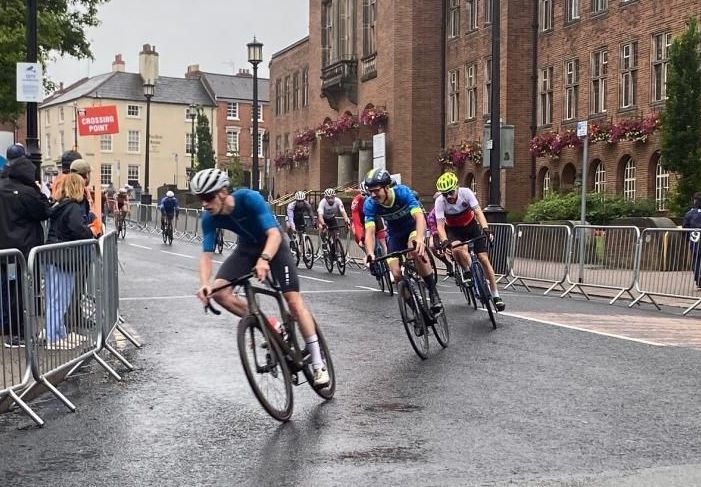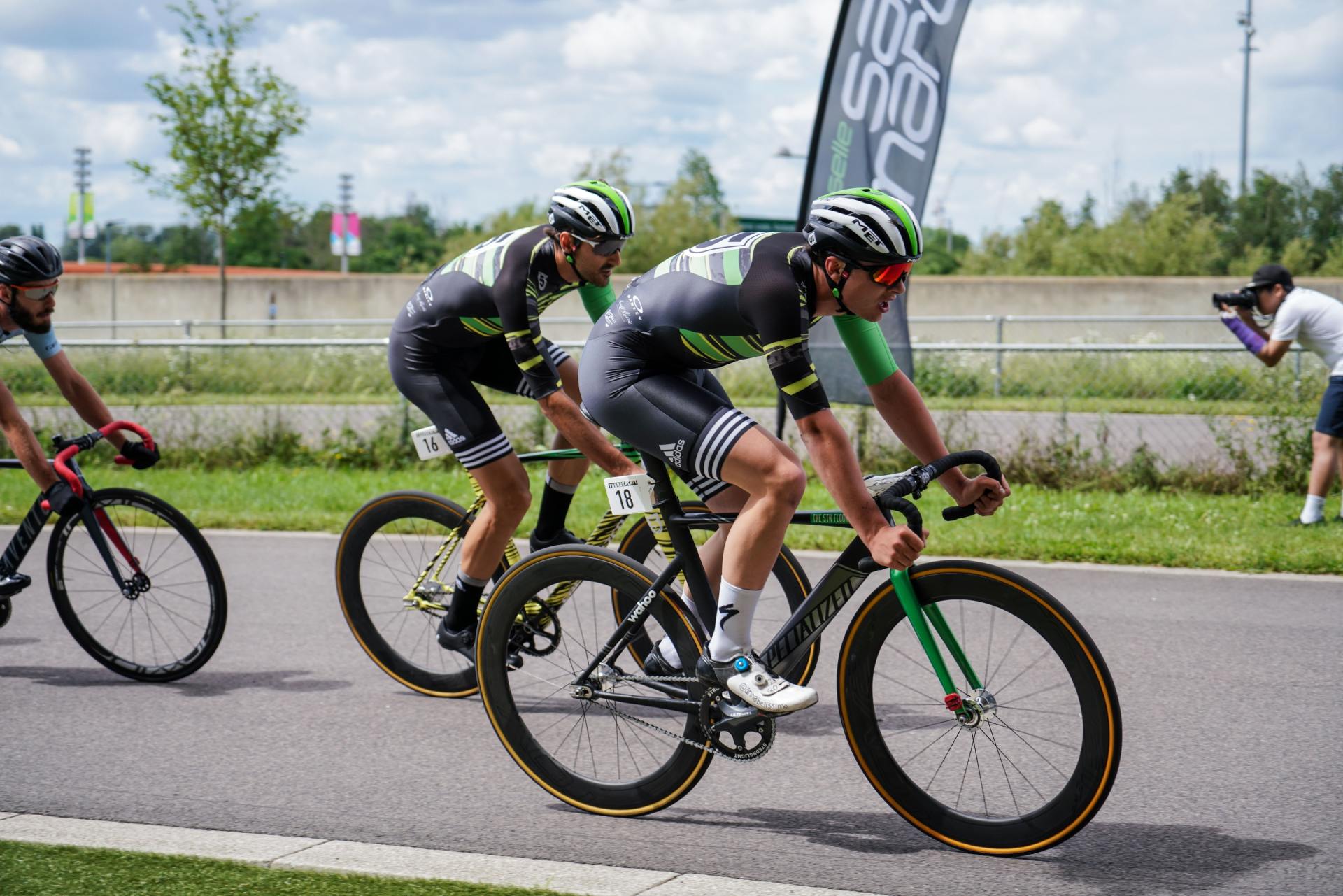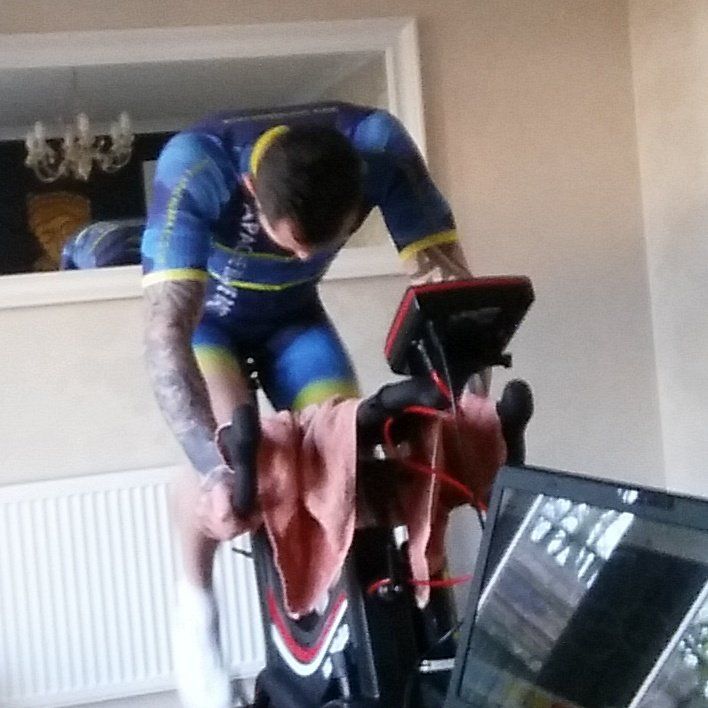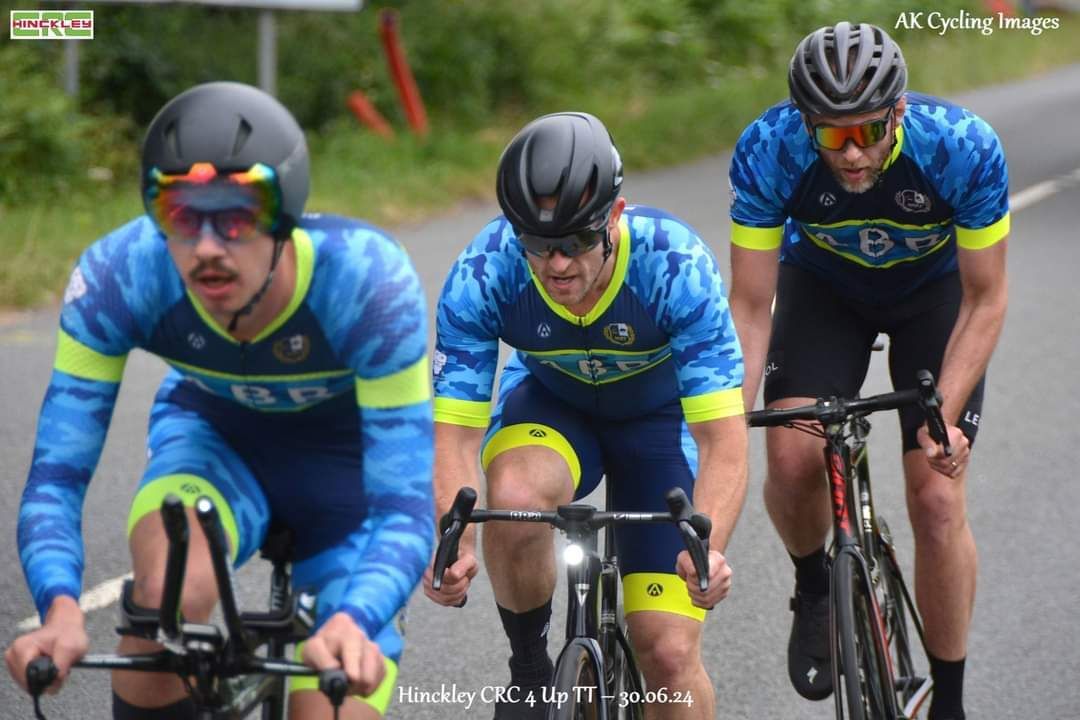Support the ABR Team
Help build a better experience for our ABR cycle team. We spend many hours on a non-paid basis.
What's your power - pt 3
Training with a power meter
Your power zones are at the heart of everything you do with a power meter and, having established your personal zones, become the foundation of your training. Using your power zones correctly is absolutely vital in improving as a cyclist.
Having followed our guide on how to do your first FTP test
you should have a list of training zones which looks something like this. This
table is based on Functional Threshold Power of 300 watts.
| Zone |
Wattage based on 300w FTP |
| Zone one – Recovery |
<165w |
| Zone two – Endurance |
165-225w |
| Zone three – Tempo |
226-270w |
| Zone four – Threshold |
271-315w |
| Zone five – Vo2 Max |
316-360w |
| Zone six – Anaerobic |
361-450w |
| Zone seven – Neuromuscular |
>450w |
The science behind
training zones. The idea behind training zones is they help you to target a
specific aspect of fitness and these zones should form the basis of every
training session you do on the bike. Before we look at each zone specifically, it helps to
understand why your body reacts the way it does when working at certain
intensities.
We’ve used the seven-zone model used by popular ride-logging and power analysis tools, such as Strava, though you may also see different models with either more or less zones. This is because, from a physiological standpoint, there are only three zones. We call them exercise intensity domains – moderate, severe and heavy – and they are separated by measurable thresholds.
The moderate domain is an exercise intensity that doesn’t raise lactic acid levels in your blood. Contrary to popular belief, lactic acid, which is produced when you exercise, is not a waste product, but a fuel which can be processed to produce energy, providing there is sufficient oxygen.
Your muscles only have a certain amount of
processing capacity and as the intensity of exercise increases, so does the
amount of lactic acid produced. Once the exercising muscles reach capacity, the
excess lactic acid is transferred elsewhere in your body for processing,
subsequently raising lactic acid levels in your blood.
The moderate zone consists of exercise intensities where your muscles are processing all the lactic acid product, so the amount of lactic acid in your blood isn’t raised above baseline levels. Once you begin exercising at an intensity where the amount of lactic acid becomes greater than your muscles’ capacity, the excess enters the blood system and you reach your aerobic threshold or, in other words, the first lactic threshold (LT1 for short). This defines the border between the moderate and heavy domains.
The heavy domain covers intensities from LT1 up to your anaerobic threshold or LT2. In the heavy domain, the levels of lactic acid in the blood are raised but remain stable, but once the exercising intensity reaches LT2, the amount of lactic acid being produced is equal to how much lactic acid you can process in your entire body. Not only are the exercising muscles transferring lactic acid to other parts of the body for processing, other body parts are now also at capacity.
The severe domain
– represents an
exercise intensity whereby the amount of lactic acid being produced is greater
than the amount which can be processed in the entire body. As a result, lactic
acid levels in the blood is going to continue to rise even if you don’t go any
harder. At some point, this becomes unsustainable and you are forced to stop – exercising in the severe domain (where you are working
anaerobically) cannot be sustained for a prolonged period.
The threshold between the heavy and severe domains (LT2) is
what cyclists will typically refer to as their ‘threshold’ – it’s
the hardest you can ride without blowing up and what we look to get a guide of
when performing an FTP test. If you think back to your 20-minute FTP test, you will
remember we took 95 per cent of your average power to calculate your threshold
power. This is because for some of the test – normally the first and last few
minutes – there is a high chance you would have crept up into the severe
training domain, which explains why you feel so empty at the end of test and
means some of the power was produced anaerobically. As LT2 sits on the border
between the heavy and severe domains we subtract five per cent of the 20-minute
power to give us a best guess at your wattage at LT2, while ensuring we don’t
include any anaerobically produced power.
| Zone |
Wattage based on FTP |
Domain |
| Zone one – Recovery |
<165w |
Moderate |
| Zone two – Endurance |
165-225w |
Moderate |
| Zone three – Tempo |
226-270w |
Heavy |
| Zone four – Threshold |
271-315w |
Heavy -> Severe |
| Zone five – Vo2 max |
316-360w |
Severe |
| Zone six – Anaerobic |
361-450w |
Severe |
| Zone seven – Neuromuscular |
>450w |
Severe |
So why do we have more than three zones? If, physiologically speaking, we only work at three exercise intensities, why do we have more than three zones? Simply put, it’s so, as athletes, we can set training to a higher degree of accuracy. For example, zone one is there to ensure you don’t go too hard in your recovery rides. If a coach were to say ‘one hour in the moderate domain’ an athlete with a FTP of 300w might go and ride for one hour at 225 watts – too much for a recovery ride. By having zone one, with a maximum of 165 watts for a 300-watt FTP, you will be riding easily enough so as to not induce any more fatigue.
You can see the severe domain is split up into a number of different zones. These relate to the three different ways (also known as pathways) to produce power anaerobically and allow us to target specific anaerobic pathways.While your body only works at three physiological intensities, using seven training zones allows you to target specific areas of your fitness
How and when to use each power zone
Zone one: Recovery – maximum two hour
Training at this intensity means you can stay active without
adding extra fatigue. After training hard, your body will often go into shut
down mode to try and recover as quickly as possible, but this can leave you
feeling sluggish. Training in zone one allows you to keep your legs turning
over without adding to your levels of fatigue.
Zone two: Endurance – one to seven hours
Riding in zone two teaches you and encourages your body to produce more mitochondria, which are essentially your body’s energy-producing power stations.
Zone three: Tempo – one to three hours
Zone three works on your ability to hold a consistently high pace and represents an effort that will feel hard but comfortable. Most people really enjoy zone three training as they feel they are riding quickly, without riding too hard. Training in zone three has some of the advantages of riding in zone two, however it is a lot more tiring, so the number of sessions completed in a row, or the length of each individual session, needs to be limited.
As you can see, zone three is a very varied zone – at the
bottom you won’t notice a real difference over zone two work and at the very
top end it will feel like a threshold effort. Upper zone three work is often
described as ‘sweetspot training’- the level at which you are getting a high
return for your time on the bike.
Zone four: Threshold – ten minutes to one hour
Zone four works on increasing your anaerobic threshold, so it starts just below a rider’s anaerobic threshold (LT2) and stretches to just above. This way, it allows a rider to push up their anaerobic threshold by using longer intervals just below LT2 and pull up their threshold by training using shorter intervals just above.
Training in zone four produces a great deal of lactic acid and, therefore, gives your body a strong stimulus to increase the number of mitochondria in the muscles, as it is the mitochondria which process the lactic acid. However, zone four training is also very fatiguing and can only be done for limited periods, so more often than not you will ride in zone four in intervals with a period of recovery between efforts.
Zone five: VO2 Max – three to ten minutes
Zone five is the intensity you will be riding at when going as hard as you can up a small climb, no longer than ten minutes long. Training in zone five is very fatiguing and these are typically leg-burning efforts (your legs are burning not due to lactic acid but because of an increase in a by-product of anaerobic metabolism – hydrogen ions). During shorter efforts, your heart rate may not have time to respond to the effort and your max heart rate comes after you have finished (this is one of the benefits of training with a power meter – you get an instant measure on how hard you are working).
You are working anaerobically in zone five and training at this intensity works on the anaerobic glycolysis pathway (remember, there are three anaerobic pathways) – this is where glycogen gets broken down to produce energy but this process is happening without oxygen. Zone five produces a large amount of lactic acid – more than your body can process, leading to high levels of blood lactate. To process this lactic acid, your body needs oxygen but in zone five your body is unable to provide enough, so eventually the exercise will become unsustainable. As a result, training in zone five works on your cardiac output and VO2 Max – how much and how quickly your heart can pump blood to where it is needed, and how much oxygen that blood can carry, therefore providing the muscles with as much oxygen as possible. It also works on the number of mitochondria in the muscles and, consequently, the amount of oxygen your muscles can process.
Zone six: Anaerobic – thirty seconds to three minutes
Zone six represents a max effort, going as hard as possible.
At this intensity, your heart rate won’t have time to respond to the effort or
you will be riding at your max heart rate. At the bottom of zone six you will
still be using anaerobic glycolysis to produce most of the energy; however, as
you move to the top end of the zone you will be producing most power using the
phosphocreatine (PC) system. Phosphocreatine can be thought of as a reserve of batteries
stored in the muscles and in zone six the phosphocreatine molecules can be
broken apart to release energy. However, these stores are very small and easily
exhausted. If you have ever done repeated 30-second sprints you will know the
feeling when you have exhausted the PC system and once these stores are
exhausted you will need to replenish them.
How? Energy is needed to re-synthesize the PC molecules and this energy can come from anaerobic glycolysis – but this is a very short-term solution as the excess lactic acid being produced will need to be processed at some point. Eventually you will be unable to continue the effort and you will be in oxygen debt, which refers to the amount of oxygen you then need to take in (on top of what you need normally) to process all the excess lactic acid and also re-synthesize the PC molecules. This process describes why, once you have finished a short, hard effort, you continue to breath hard – your body is trying to take in as much oxygen as possible to be able to re-pay the oxygen debt.
Zone seven: Neuromuscular – less than 30 seconds
Training in zone seven works on your sprint power. It also
causes the most muscle size increase (hypertrophy), so if you want bigger, more
powerful legs you need to be working in zone seven.Alongside the phosphocreatine stores, your body has an even
smaller store of an energy source known as ATP, which can be thought of as your
body’s energy currency. ATP is used to drive muscle contractions and in doing
so is broken down (it then becomes ADP), but
before it can be re-used it needs to be put back together – again, this
requires energy. All the metabolism that takes place in your body during exercise
is used to put ATP molecules back together but sprinting in zone seven requires
power so quickly that there is hardly any time for any type of metabolism.
Therefore, you body needs to use the ATP stores it has to provide that instant
energy to allow you to sprint.
Zone seven also works on the way in which your muscles fire. When you go to sprint a message is sent from your brain down to the muscle fibers in your legs to contract and the way that message is sent is very important – the order in which the muscle fibers fire and how many fibers are firing at the same time dictates the amount of power that goes through the pedals. Repeated sprinting improves the signals from your brain to your muscles and improves your sprint, which is why this zone is known as the neuromuscular zone.
ABR blogs are brought to you by Bloobo.com Website Builders.
What do they do?
Bloobo.com offers a wide range of services nationwide, all serviced from their offices in Derby.
Services include: Website Builder. Mobile apps. Marketing
They will work with you to design and build your website to match your brand, help attract new customers and manage social media and marketing consultancy.
Everything is designed for your brand and they offer great value whilst guaranteeing high quality.















